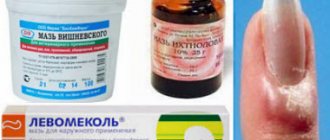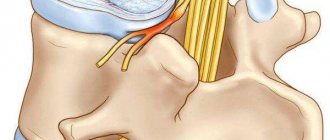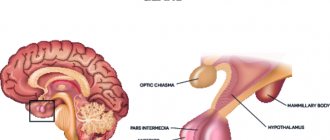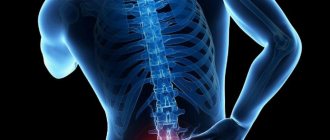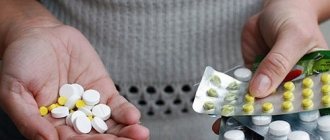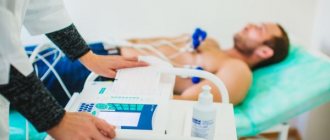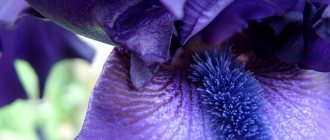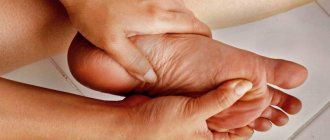Stenosing ligamentitis
– a disease of the tendon-ligamentous apparatus of the hand, in which there is a locking of the finger in an extended or bent position. The cause of development is usually repetitive monotonous movements. At first, there is a feeling of an obstacle; when bending and straightening the finger in a certain position, a click is heard. Subsequently, complete blocking of the finger in a bent or straightened position is possible. There is pain at the base of the finger. The diagnosis is made on the basis of anamnesis and clinical picture; to exclude other diseases, an x-ray of the hand is performed. Treatment can be either conservative or surgical.
Total information
Stenosing ligamentitis, as a rule, occurs at working age - from 35 to 50 years. It is most often detected in women, which is explained by routine, same-type housework. The pathology can also be observed in children - this is due to the regular fixation of the fingers in some position due to the performance of written tasks. In most cases, only the first finger is affected, which may be facilitated by a congenital disorder of the ligamentous apparatus.
The fingers of the hand are affected by this pathology with different frequencies:
- in 25.5% of cases - the first finger;
- in 3.3% – second;
- in 19.7% - third;
- in 43.8% - fourth;
- in 7.7% - fifth.
When one of the fingers is “switched off,” the hand does not lose its functions, but they deteriorate significantly. So, for example, with stenosing ligamentitis of the thumb, its function can be partially performed by the second finger, which is not adapted for this (when holding small things, performing fine motor skills, opening a door handle, and so on). In some cases, the described pathology is diagnosed on several fingers of the hand at once, which further affects the functionality of the hand and the patient’s quality of life.
In right-handed people, greater discomfort is caused by stenosing ligamentitis on the side of one or more fingers of the right hand, in left-handed people - on the left.
The pathology seems simple, but often conservative treatment is ineffective, and it is necessary to resort to surgical intervention to ensure normal motor activity of the finger and the patient to ensure the same quality of life.
Types of ligamentite
Reading information
Ligamentite has several types:
- Stenosing ligamentitis of the hand ligaments. The disease affects one or more fingers, resulting in loss of functionality.
- Stenosing ligamentitis of the wrist ligaments.
- Ligamentitis of the knee joint. Usually the disease develops after injury or due to concomitant infectious diseases. Ligamentitis of the medial collateral ligament of the knee usually develops due to excessive stress and increased movement of the knee.
- Foot ligamentitis. Often develops in athletes after damage to the Achilles tendon.
- Ligamentitis of the spine. This is compaction and inflammation of the ligaments between the spinous processes of the vertebrae. The second name of the disease is interspinous ligamentitis.
Stenosing ligamentitis is an inflammation of the ligaments and tendons of the hand, which leads to a bent position of one or more fingers.
Note. The disease was described in 1850 by the French doctor Alphonse Nott, which is why it is also called Nott's disease.
In 1887, the first operation using the dissection method was performed by Dr. Schonbern. From that time on, people started talking about the disease as a disease requiring serious treatment. But the first successes were achieved much later. Namely: in 1966, the Russian doctor Shastin proposed treating the disease with a surgical method, which he called minimally invasive ligamentotomy.
We also recommend studying the topic of this material:
Causes of wrist hygroma and methods of eliminating pathology without surgery
Wrist hygroma is an accumulation of synovial fluid in the periarticular tissues. The main reason is thinning of the joint shell due to systemic load on the limb. Pathology...
Readers often study along with this material:
- Temporomandibular joint pain: how to quickly get rid of pain?
- Synovioma symptoms, causes, treatment methods
Causes
The development of the described pathology is based on inflammatory processes. In this case, stenosing ligamentitis can be:
- aseptic - without the participation of pathogenic microflora;
- septic – with the addition of an infectious agent.
In the first case, the underlying cause is a change in the structure of the tendon-ligamentous apparatus of one or another finger, in which the infectious component has not been identified.
In septic stenotic ligamentitis, the leading role is played by pathogenic microflora, which enters the tissues of the finger and causes an inflammatory process in them, thereby contributing to the blocking of the finger. Such provocateurs may be infection:
- nonspecific;
- specific.
In the first case, this is a number of pathogenic microorganisms that are capable of initiating various types of infectious and inflammatory process. Most often this is:
- staphylococci;
- streptococci;
- Proteus;
- coli.
Also, a mix of pathogens is often detected, which can lead to the development of stenosing ligamentitis.
Specific microflora (against its background, one type of disease occurs - tuberculosis in the presence of the tuberculosis bacillus, syphilis when Treponema pallidum is introduced into the body, and so on) can less often provoke the described pathology, but its influence cannot be excluded.
Also identified are factors that, although they do not become the direct causes of stenosing ligamentitis, contribute to its development, and if it appears, to progression and, in some cases, complications. These are the following groups of factors:
- hereditary;
- degenerative-dystrophic;
- systemic autoimmune;
- traumatic;
- endocrine;
- exchange.
note
Very different types of hereditary pathologies can contribute to the development of stenosing ligamentitis. It may consist in a violation of the structure of the connective tissue that makes up the tendons of the fingers and their vagina, congenital narrowing of the canal in the soft tissues in which the tendon passes, and so on.
Degenerative-dystrophic processes in the tendons of the fingers and their sheaths most often develop:
- as an age-related involutive process;
- against the background of metabolic disorders.
Systemic autoimmune processes are one of the most common factors that contribute to the development of stenosing ligamentitis. Often this is:
- systemic lupus erythematosus is a diffuse lesion that is immune in nature and is characterized by damage to the microvasculature;
- systemic scleroderma is an autoimmune disease based on impaired microcirculation, inflammation and generalized (widespread) fibrosis (ingrowth of connective tissue) of body structures;
- diffuse fasciitis is a connective tissue disease that affects deep fascia (connective tissue membranes covering organs, muscles, blood vessels, nerve branches), muscles, subcutaneous fatty tissue and skin;
- Idiopathic dermatomyositis (polymyositis) is a systemic disease of the connective tissue of the muscles with damage to the skin in the form of erythema (limited redness);
- Sjögren's disease (syndrome) is a systemic lesion of connective tissue of an autoimmune nature, in which the exocrine glands (mainly salivary and lacrimal) are involved in the pathological process;
- mixed connective tissue disease (Sharpe's syndrome) is a systemic pathology that combines individual manifestations of systemic lupus erythematosus, dermatomyositis and scleroderma;
- relapsing polychondritis is a rare inflammatory pathology that affects cartilaginous structures and connective tissue of various organs and systems;
- recurrent panniculitis (or Weber-Christian disease) is a progressive inflammatory lesion of subcutaneous fatty tissue, which leads to the destruction of fat cells and their replacement by connective tissue with the formation of nodes or infiltrates.
Regular physical activity on the hands can contribute to the development of the described pathology, during which the tendon of the finger muscles rubs too often against the walls of the vagina (the specific connective tissue membrane that covers it and plays the role of a kind of protective coupling). Such a load could be:
- household;
- professional;
- sports.
Household stress on the tendons, which leads to the development of the described pathology, occurs when performing routine household work:
- darning;
- washing dishes;
- hand wash
and so on.
Stenosing ligamentitis often develops against the background of a certain type of work, in which the same type of repetitive movements are performed. Moreover, the pathology is more often diagnosed in patients whose employment is associated with:
- frequent grasping movements;
- fixing fingers in a certain position for a long time.
In the first case, the following professions are indicative:
- masons;
- welders;
- cutters
and so on.
In the second case, such employment may be:
- manual rewriting of a large number of text documents;
- the process of digging in which a person holds a shovel in his hands for a long time
and so on.
The pathology can also be associated with playing certain types of sports, in which only certain types of hand muscles are involved, which is why their tendons may suffer against the background of constant load. This:
- shooting from a sporting shotgun (due to a constantly tense trigger finger);
- skiing (due to a certain position of the hand holding ski poles);
- auto and motor sports (due to fixation of tense fingers on the steering wheel)
and so on.
Stenosing ligament most often develops in patients who have been diagnosed with disruptions of the endocrine system. It mainly develops against the background of endocrine pathologies, which have been observed to influence many other pathological conditions of the body - these are:
- diabetes mellitus – a disorder of carbohydrate metabolism due to insulin deficiency;
- hypothyroidism – lack of thyroid hormones;
- hyperthyroidism – excessive synthesis of thyroid hormones.
Also, stenosing ligamentitis often develops against the background of metabolic disorders - often this concerns the metabolism of sodium, potassium, chlorine and calcium.
Stenosing ligamentitis in children
Research in the field of orthopedic disorders in children shows that the development of problems with contractures of the fingers can begin to form at an early age. Stenosing ligamentitis in children affects exclusively the thumb. This is due to the peculiarities of its anatomical structure and development. The manifestation of the grasping reflex can provoke primary damage to ligaments and tendons as a result of inconsistency in neuromuscular impulse transmission.
The appearance of a primary clinical sign in the form of clicking sounds can lead to the development of contracture. Or it may remain a temporary manifestation of imperfect development of the ligamentous apparatus. A more precise diagnosis can be made only at the age of 2 years. If at this time signs of instability of the tendon ligament apparatus persist, then specialist help may be required. In our manual therapy clinic you can get a free initial consultation with an orthopedist with extensive experience working with children of early and middle age.
If necessary, rehabilitation treatment can be carried out. With a small degree of pathological changes, a course of therapeutic exercises is sufficient to completely restore the mobility of the thumb. We recommend that rehabilitation be carried out before starting school. Stenosing ligamentitis in children can cause poor handwriting and difficulty learning to write.
Development of pathology
To understand why stenosing ligamentitis develops, you need to imagine the anatomical structure of the hand.
The flexor tendons of the hand are located in tendon sheaths - these are connective tissue sheaths lined from the inside with a synovial membrane. It produces a small amount of biological secretion. Thanks to this fluid, as well as the smoothness of the walls of the cases, unhindered sliding of the tendons during movements is ensured.
In the area of the base of the fingers (where they are “attached” to the metacarpal part of the hand), as well as at the level of the diaphysis (central sections), the phalanges of the tendon are held by ligaments.
Under the influence of the factors described above, the following processes are observed in tendon sheaths:
- thickenings form;
- the lumen of the canal narrows.
Because of this, the movement of the tendons becomes difficult, and as pathological changes progress, it becomes completely impossible.
This is a general approximate scheme of occurrence - its details have not been clarified. Most clinicians believe that the pathological process first forms in the ligament and only then spreads to the tendon and its sheath. Other authors believe that the very first changes can occur not only in the ligament, but also in the tissues of the tendon sheath. But regardless of this sequence, with the further development of the disease, all anatomical elements of this area are affected. The end result is the following:
- the ligament becomes thicker and denser;
- inflammation develops in the inner shell of the tendon sheath and it loses its smoothness;
- the tendon becomes thicker.
Clinical picture and causes of the disease
The diagnosis of trigger finger is most often made in children under 1 year of age and women over 40 years of age. From a medical point of view, this is an inflammatory process in the tissues and tendons of the hand. It is this that leads to damage and thickening of the tendons, preventing the free movement of the fingers.
Clinical picture and causes of the disease
Factors provoking ligamentitis:
- difference in the rate of growth and development of bone, tissue and tendon structures of the hand;
- pathology in the formation of tendons;
- congenital features of the structure of the hand;
- genetic predisposition and poor heredity;
- inflammatory and chronic diseases of joints, ligaments and bones (rheumatism, arthritis, gout, diabetes, etc.);
- multiple manual work and features of professional activity, frequent overloads and excessive stress during work;
- injuries to the hands and fingers, as well as the consequences of bruises, injuries and fractures.
Symptoms of stenosing ligamentitis
Manifestations of pathology depend on the degree of its development. Often this is:
- finger movement disorders;
- pain syndrome;
- the appearance of a compaction at the base of the affected finger.
At the initial stage of the pathology, the main characteristic symptom is the “clicking” of the finger during extension (it extends in the form of a sudden movement). With further progression, this symptom disappears, since with a protracted course it becomes more difficult to recognize the disease - the “snapping” symptom disappears, the finger can neither bend nor straighten due to flexion or extension contracture.
Characteristics of pain:
- by localization - in the area of the affected finger;
- in terms of distribution - without any characteristic irradiation;
- by nature – aching at rest, “shooting” when trying to straighten the finger;
- by intensity - moderate at rest, strong, sharp when extending the finger;
- by occurrence - at the very beginning of development, pathologies may be absent, but often arise with its further progression.
Stenosing ligamentitis occurs in three phases.
Features of the initial phase:
- when pressing on the palm, pain occurs at the base of the affected finger;
- Difficulties when trying to fully straighten or bend a finger are especially pronounced in the morning.
In the second phase, constant “snapping” of the finger begins to cause significant inconvenience, as it is repeated more and more often, and the finger feels an increasing “barrier” when moving. Stage Features:
- the patient increasingly has to straighten the finger with the second hand.
- pain persists even after the click;
- the lump at the base of the finger becomes painful.
In the third stage, the condition of the affected finger worsens:
- persistent contracture develops;
- the position of the finger can only be changed using the second hand;
- after returning the finger “to its place,” the pain persists for a long time, which can spread to the palm, forearm, and sometimes the shoulder.
Specifics and varieties
Stages of stenosing ligamentitis
The disease is often diagnosed in middle-aged and older patients, but can also occur in children. The tendons get caught in the fibrous canals, which leads to problems with bending the finger. The disorder worsens over time, as the affected ligament, if left untreated, gradually turns into cartilaginous hyaline tissue.
Diagnosing ligamentitis of the thumb is quite simple because the disease has a number of unique symptoms. The most recognizable is the permanently bent finger. Due to prolonged inflammation of the compressive cord (connecting the muscle to the bone), it gradually changes. The articular tendon thickens and the ligaments narrow. The inflammatory process affects the annular ligaments and prevents the thumb from spontaneously straightening.
The medical picture of the pathological process may vary depending on its location.
The treatment process is most often chosen to be identical, regardless of the location of the disease. But it should be started as early as possible, since if left untreated, the disease can lead to serious consequences.
Let us consider the consequences themselves using the example of the stages of thumb ligamentitis:
- The first stage - the disease is just beginning its destructive effect on tissue, the characteristic “clicking” and impaired mobility are periodic.
- The second stage - the disease leads to difficulties in straightening the finger; in order to do this, a conscious effort must be made.
- The third stage - damage to the connective tissue leads to persistent preservation of the finger in a constantly bent position.
- The fourth stage is the final stage of development, leading to irreversible damage to the flexion-extension function of the thumb and deformation of the joint.
An unnaturally bent finger loses the ability to straighten independently due to the degeneration of the connective tissue of the tendon cord and the narrowing of its annular ligaments.
The disease received its name “snapping finger” because of the phenomenon that accompanies its development at one of the early stages. During this period, it is still possible for the patient to straighten the finger independently, but the process is accompanied by a characteristic clicking sound.
Diagnostics
Making a diagnosis is not difficult and is based on the patient’s complaints, clarification of the medical history (the presence of characteristic loads on the finger and hand) and examination.
Physical examination findings will be:
- during examination - in the first and second stages of the pathology, the patient demonstrates to the doctor a “trick” of “snapping” the finger, in the third, movements in it are impossible;
- upon palpation (palpation) - soreness and compaction are detected near the base of the affected finger.
Instrumental and laboratory diagnostic methods are used only in cases of extreme necessity - when there is doubt about the diagnosis. So, to exclude pathology of small joints, an X-ray examination is performed.
It should be noted that this pathology can be combined with diseases such as:
- arthrosis of large joints of the upper and lower extremities, as well as small joints of the hand - their non-inflammatory damage;
- epicondylitis is a degenerative-inflammatory disease of the tissues in the shoulder joint, which develops at the sites of tendon attachment to the epicondyles of the humerus;
- spondyloarthrosis is a non-inflammatory lesion of the joints of the spine, which develops when the spinal disc is destroyed, which reduces its height, and the load is therefore transferred to the vertebral joints;
- glenohumeral periarthritis - inflammation of the soft tissues in the area of the glenohumeral joint.
The combined development of stenosing ligamentitis with these pathologies is explained by severe damage to the connective tissue at the systemic level.
Diagnosis of the disease
Making a correct diagnosis is a task that only a doctor can perform. Therefore, if you find any signs of ligamentitis, you need to visit your doctor as soon as possible.
Diagnosis in each case begins with interviewing the patient and closely examining the sore spot . The doctor will definitely ask him about his lifestyle and the severity of pain. It is also necessary to find out whether the disease was preceded by any trauma. Next, careful palpation should be carried out, which in most situations is sufficient to form a diagnosis.
To complete the clinical picture, it is often necessary to obtain an x-ray of the limb and collect some tests.
During the above manipulations, the physician must determine the stage of the existing disease. It is this that will ultimately influence the further type of treatment.
Treatment of stenosing ligamentitis
Treatment of stenosing ligamentitis depends on:
- stages of the disease;
- degree of influence of provoking factors;
- age of the patient.
Recommendations for the first stage of pathology are as follows:
- reducing the load on the hand;
- to unload the fingers - immobilization;
- anti-inflammatory drugs;
- electrophoresis with hyaluronidase.
Recommendations for the second stage of pathology will be as follows:
intensive anti-inflammatory therapy;- enzyme preparations;
- finger immobilization;
- massage;
- electrophoresis;
- warm relaxing hand baths;
- in case of severe inflammatory damage - blockade with novocaine and glucocorticosteroid drugs.
Conservative therapy in the second stage of pathology development is less effective. But it must be carried out in any case, since there are significant chances of recovery without any surgical intervention. Treatment may continue for several months. If it turns out to be effective, then to prevent recurrence of the described pathology, provoking factors should be eliminated and the type of work activity should be changed. If the results of such treatment are not satisfactory, then surgical intervention is indicated.
In case of stenosing ligamentitis of the third stage, surgical correction of the pathology is performed. The absolute indications for its implementation are:
- ineffectiveness of other treatment methods;
- pain syndrome that cannot be relieved;
- contracture, which makes self-care difficult and worsens the quality of life.
Surgical intervention is performed as planned . In this case, tissues are dissected, changes in which have provoked stenosis (narrowing) of the canal, which is why the movement of the tendon in it becomes difficult. At the same time, they try not to perform any manipulations on the tendon sheath, but if there are any violations on its part, the vagina is opened.
In the postoperative period, conservative therapy is carried out. It is based on the following purposes:
- antibacterial drugs to prevent postoperative infectious and inflammatory complications;
- painkillers – in case of postoperative pain;
- physiotherapeutic procedures.
Note:
In order to reduce tissue trauma, a type of surgical intervention for stenotic ligamentitis is performed, such as closed ligamentotomy. During this operation, the ligaments are cut through a small puncture. But this method of radical treatment is not popular, since relapses develop after it more often than after the classical surgical method.
Treatment of the described pathology (both conservative and surgical) does not guarantee that relapses or damage to other fingers will not occur. To reduce the risk of their development, you should reduce the load on your fingers - in particular, change your job for this.
It is important to teach the patient the correct working posture, in which the risk of developing stenotic ligamentitis is reduced, and to relax the muscles of the hands.
Treatment
Stenosing ligamentitis can be treated using two methods. For the initial stages of the disease, a conservative method is used, and if the disease is advanced, surgical intervention is used.
Stenosing ligamentitis treated conservatively:
- Electrophoresis.
- Ozokerite.
- Phonophoresis.
- Applications.
- Drugs.
The conservative method, if the disease is not advanced, gives results within a few weeks. During this time, the affected joints, ligaments and muscles of the hand are completely restored. A specialist should draw up a treatment plan. Only a doctor can prescribe medications.
It is important to know that massage is not included in the list of procedures, as it can aggravate the patient’s condition.
During treatment, the patient should avoid any stress, even the simplest. It is necessary to exclude any work, especially related to the brush. This even applies to cleaning or embroidering. The recovery time depends on compliance with this requirement.
Conservative treatment is especially effective for children. More than 70% of patients under 3 years of age make a full recovery.
Surgical intervention
If the conservative method does not provide the desired result, surgery will be required. The surgical method involves dissection of the deformed tendon or annular ligament. The intervention is safe for both adults and children.
Before surgery, during an exacerbation, the patient must follow some recommendations.
Requirements:
- Avoid moving the brush. This will increase the chance of injury.
- The use of drugs that reduce inflammation and pain. Medicines are prescribed by a doctor.
- Tendon injections. Injections are given only by a doctor.
After the inflammatory processes have decreased and the period of exacerbation has passed, surgery is prescribed. Intervention will help avoid relapse, as well as loss of performance.
Children who underwent surgery before 2 years of age have about a 90% chance of a full recovery. Doctors perform the intervention using an open method. It avoids exacerbations and does not damage nerve cells.
Open surgery
Surgical intervention in both adults and children follows the same plan.
Operation stages:
- General anesthesia.
- Dissection of the ligament around the thickening.
- Alignment of fingers.
- Treatment of the wound.
- Applying a bandage.
- Tire installation.
The operation is very simple and has many advantages over other types of treatment.
Advantages:
- Low probability of tissue damage.
- There is no possibility of injuring blood vessels or nerves.
- Decompression incision.
- No damage to anatomical relationships.
The brush begins to work fully within a couple of days. Sutures are removed two weeks after surgery.
Closed operation
Surgical intervention in this way lasts only 20 minutes.
Operation plan:
- Local anesthesia is used.
- A small puncture is made.
- The annular ligament is divided.
- Fingers straighten.
- A bandage is applied.
At first glance, the operation seems quick and simple. However, this method has several significant disadvantages. Therefore, especially for children, it is advisable to use the open method.
Flaws:
- Possibility of flexor tendon injury.
- Possibility of relapses.
- Lack of visual control increases the chance of injury.
- The appearance of a hematoma.
You should choose the appropriate method after consulting a doctor.
Alternative Methods
Folk remedies have a positive effect on ligaments, muscles and the wrist joint.
Treatment methods:
- Warming up. Heated salt is poured into a bag and applied to the damaged area. It is advisable to repeat the procedure several times a day.
- Healing mud. Healing clay is brought to the consistency of sour cream. Then 5 teaspoons of apple cider vinegar are added to the mixture. The paste must be applied to the damaged finger, wrapped and left for about 2 hours. The hand should rest at this time.
- Mix six teaspoons of crushed elecampane rhizome with 1 liter of hot water and boil for 20 minutes. Boil the resulting liquid, apply to paper towels, and then apply to the damaged area.
- Brew pine and coniferous branches in a ratio of 1:3. Cook for 20 minutes, then strain. Apply a rag moistened with liquid to the sore spot.
- Steaming a limb. Pine oil and sea salt are added to a liter of boiling water. You should move your fingers during the steaming process.
- Calendula flowers should be crushed and mixed with baby cream in a 1:1 ratio. The resulting ointment is infused for a day in the refrigerator.
Folk remedies are especially effective in the early stages of the disease. Snapping finger responds well to alternative treatments. Since folk remedies have no contraindications and are suitable even for children.
Gymnastics
Gymnastics can help relieve pain in the wrist joint, ligaments, and muscles of the hand.
Exercises:
- Elbows rest on the table, palms facing up. Shaking movements are made with the brush.
- Playing an imaginary flute.
- Elbow on the table. Rotations are performed with a brush.
- Hands at chest level, palms folded together. Alternately apply pressure with the fingers of one limb to the other.
- The position is similar. The wrists are spread apart, the fingertips do not separate from each other.
Exercises are effective in the early stages of the disease.
Prevention
The main methods of preventing stenosing ligamentitis are:
optimization of physical activity on the hand in general and fingers in particular;- if necessary, put stress on the hands - relax them regularly;
- performing physical exercises for the hand, including with sports equipment;
- prevention of degenerative-dystrophic, systemic autoimmune, endocrine and metabolic pathologies that can provoke the development of the described pathology, and if they have already arisen, their timely identification and adequate treatment;
- avoiding hand injury.
Treatment with oils
Treatment with oils
Rubbing with essential and vegetable oils is beneficial.
- Pour dried lavender flowers with vegetable oil in double volume and simmer in a water bath for an hour and a half. Without straining the oil infusion, pour it into a container and use it for external rubbing.
- Prepare an oil mixture of four drops of lavender oil and the same amount of fir oil. Rub your trigger finger morning and evening. Before each procedure, it is important to prepare a fresh mixture.
- In 50 ml of oil base, stir 5 drops of geranium, lavender and clove oils. Shake the mixture and lubricate the area over the damaged tendon three to four times a day.
Forecast
The prognosis for stenosing ligamentitis is generally favorable. But it should be borne in mind that the condition of the fingers depends not only on conservative or surgical treatment methods, but also on the ability to relax the fingers. Specialists who are involved in the field of hand surgery believe that patients do not control the relaxation of their hands even on vacation - this is explained by their peculiar work habits that have been developed over many years.
It is also believed that an additional factor that contributes to the occurrence of muscle tension is a kind of defensive reaction to pain, and it may partially persist even after the pain has subsided. Therefore, to improve the prognosis, patients should develop new motor habits - they will help reduce physical stress on the hand and avoid the risk of relapses.
Kovtonyuk Oksana Vladimirovna, medical observer, surgeon, consultant doctor
7, total, today
( 67 votes, average: 4.91 out of 5)
Fluid in the knee: what to do?
Elbow bursitis: causes and signs, how to treat
Related Posts
Prevention
It is easier to prevent a disease than to treat it. Therefore, care should be taken not to overstrain the ligamentous apparatus. If the loads are related to professional activities, then you should take breaks from work. If children have pathological abnormalities in the development of the ligamentous-tendon apparatus, parents should be attentive to the condition of the thumb in patients aged 1 to 3 years. If suspicious symptoms appear, it is important to consult a doctor.
To avoid such a disease as stenosing ligamentitis of the fingers, it is important to remember a number of provisions and comply with the following requirements:
- Maintain a healthy lifestyle, a combination of work, rest and movement.
- Avoid salt deposits in joints by following your diet and drinking water in moderation.
- When working at a computer, it is important to properly organize your workplace, ensure good positioning of your back and arms, and change the work on the keyboard using the mouse to the touchpad, without causing numbness in your fingers. It is important to choose the right mouse for the keyboard.
- Take frequent breaks from work. During breaks, a set of exercises is not prohibited.
Be healthy! And if a similar problem happens to you, don’t worry, it’s important to believe in the best outcome and be patiently treated.
I don’t know how far this method of treatment has been developed everywhere; it is simple, reliable and practically painless.
Be healthy you and your loved ones!
There is currently no specific prophylaxis to prevent the development of Nott's disease. People with a predisposition to this pathology are advised to follow a work-rest schedule and do a warm-up for their fingers if their work involves small, monotonous movements.
It is also recommended to maintain chronic diseases in a compensated state and, if possible, to avoid microtraumas of the hand.
Knott's disease is an unpleasant disease from which no one is immune, since almost everyone in the modern world has certain risk factors. The disease progresses quite quickly and is almost impossible to treat with conservative methods.
Patients who notice the first signs of the disease are advised to immediately seek help from a specialist in order to begin treatment as early as possible. There is no point in abandoning the operational method of solving the problem, since it is by far the most effective.
There are no similar articles.
Detecting the snap finger is easy. Therefore, if you suspect a disease (crunching in the fingers), in adults or children, you should immediately reduce the load on the hand. Compresses and light massage will also help. You should not self-medicate; you should immediately consult a specialist.
You should not neglect folk remedies that help with tendon inflammation. It is quite possible to cure trigger finger, especially at an early age.

